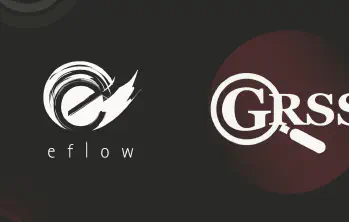The State of Trade Surveillance in 2022: Market Watch 69
The FCA Discusses The State of Trade Surveillance in Latest Market Watch Newsletter
6 months on from the last edition, the Financial Conduct Authority has released Market Watch 69 - the latest in their series of newsletters focused specifically on market-abuse surveillance.
While it has been quite some time since the last edition, this newsletter comes off the back of a recent flurry of activity from the regulator with regards to the regulation of market abuse. Last month, in the space of a week, they published a strict 3-year plan for regulation in the UK and announced a CryptoSprint to discuss the regulation of digital assets and cryptocurrencies.
Market Watch 69 covers a lot of ground, highlighting improvements to be made in market abuse risk assessments, outsourcing and financial crime. However, the greatest point of emphasis is a newly developed stance on trade surveillance, and it is this topic that will be the focus of the following article.
A More Targeted Approach
Market Watch 69 offers more direct and explicit instruction than any of the preceding newsletters with regards to trade surveillance. In particular, it takes great care to outline specific features that a firm’s market abuse solution should have so as to ensure proper compliance with MAR.
Previous editions of the newsletter have shied away from explicitly detailing the features and functionality that financial firms should look for in their market abuse solutions. This fact has been readily noted in both the RegTech space and the financial services industry more generally; a 2021 report published by RegTech Associates and City of London cited the ‘hesitancy of regulators to promote RegTech solutions’ as one of the greatest barriers to RegTech adoption.
Market Watch 69, however, bucks this trend. While previous newsletters favoured general advice, this edition takes a far more targeted approach, providing specific technical requirements which successful trade surveillance solutions are expected to meet in order to qualify as effective.
Dynamic Parameters
One such requirement is the inclusion of dynamic parameters. The newsletter states that while ‘some firms consider the different characteristics of different asset classes and instruments before applying this information to calibrating alert scenarios’, a number of firms ‘apply generic calibration across (and within) asset classes, where the nature and scale of the metrics involved (eg price movement) are significantly different’.
Put simply, the FCA here is highlighting the importance of being able to configure your trade surveillance system to test records differently based on factors such as asset class, volatility or liquidity. Depending on the system being used, this feature may be called ‘dynamic’ or ‘conditional’ parameterisation, but the general principle is the same - it is the ability to automatically alter testing parameters based on various criteria, and is usually powered by some form of machine learning.
For instance, a highly liquid, high value stock would need to be tested against a different set of parameters and tolerances than an illiquid, low value instrument. Different instruments have different surveillance requirements, and as such, an effective trade surveillance solution should be able to differentiate between these types and alter its testing approach accordingly.
The ability to set alert parameters dynamically based on metrics such as market volatility, instrument liquidity and major indices movement has been a cornerstone of eflow’s trade surveillance solution TZ for several years now. TZ offers a feature called ‘scenarios’. Scenarios are a way of identifying and categorising records within TZ which exhibit common behaviours or which have common surveillance requirements. Once a record is placed within one of these scenarios, testing parameters can be applied to it dynamically, offering a flexible approach to testing which is more representative and far less likely to generate false positives.
While static surveillance solutions which blanket apply the same alert parameters to all trades may have sufficed in years gone by, the inclusion of the above wording in this newsletter shows that regulators will no longer be satisfied with this approach. The expectations of regulators are only growing higher, and
A Lack Of Awareness
Another point of emphasis - albeit a less technical one - is the simple lack of awareness that many firms have with regards to how to properly configure their trade surveillance system. The FCA states that, even when using a solution with the necessary capability to detect insider trading or market abuse, ‘sometimes firms are unaware of these developments and so may not be making best use of the technology’.
This highlights the importance not just of good technology, but of proper support. eflow utilises a three-pillared approach to client support, offering a technical helpdesk, frequent client engagements to keep clients up to date with the latest developments, and active monitoring to ensure that clients are making proper use of their system. Without this support network, financial firms run the risk of failing to comply despite having a trade surveillance system in place.
Our Solution
All of the concerns about the current state of trade surveillance expressed in Market Watch are addressed by TZ- our trade surveillance solution. If you would like more information on how TZ could help your firm comply, get in touch, or book a consultation.



